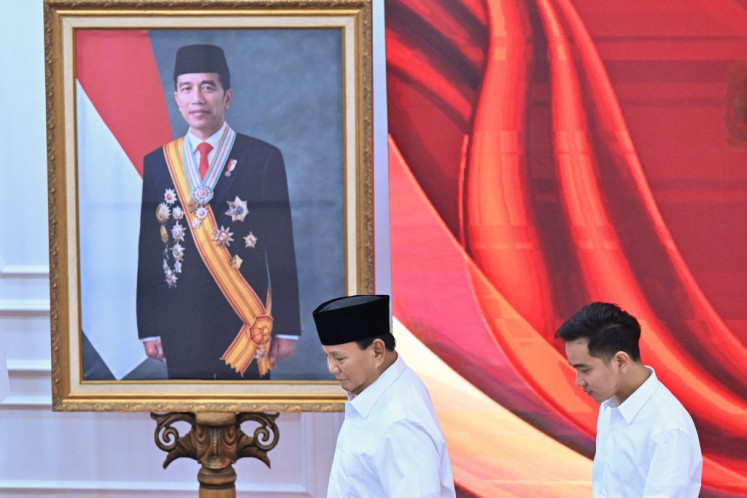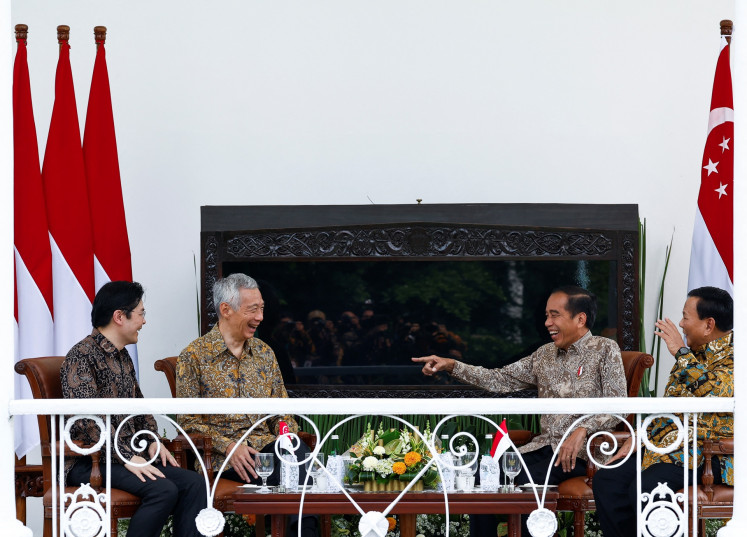Analysis: Regaining momentum in Indonesia’s automotive industry
After experiencing a downturn in 2015, Indonesia’s automotive industry achieved year-on-year (yoy) growth of 5
Change Size

After experiencing a downturn in 2015, Indonesia’s automotive industry achieved year-on-year (yoy) growth of 5.01 percent in 2016. A mild slowdown by 0.32 percentage points is predicted this year, due to low consumer confidence.
Domestic car sales declined steadily over consecutive years after touching a high of 1.23 million units in 2013. They fell to 1.21 million in 2014 and by another 16 percent to 1.03 million in 2015.
Car production showed a similar trend, reaching a recent low in 2015. The most affected segment was commercial vehicles, where sales fell by 16.5 percent in 2015, while passenger vehicles sales dropped 15.9 percent.
Motorcycle sales followed the trend a year later. They fell by 17.7 percent from a record 7.9 million units in 2014 to 6.5 million in 2015. Motorcycle production also declined, following the sales trend, especially in 2015.
However, Indonesia’s automotive industry regained its growth momentum last year. Car sales and production increased again, by 4.7 percent yoy and 7.2 percent yoy, respectively, nearly reaching the sales performance of 2014.
Passenger vehicle sales climbed 16.2 percent yoy after declining for two years in a row. Conversely, commercial vehicle sales shrank by 28 percent yoy, continuing their decline for a third year running.
The main source of car sales growth in 2016 were cars of the so-called low cost green car (LCGC) type, which expanded by 32.8 percent yoy and contributed 22.2 percent to total car sales. The strong performance of LCGC vehicles was attributed to successful launches of new 7-seaters. Meanwhile, non-LCGC sales dropped 3 percent.
In contrast, motorcycle sales have not seen any rebound. Motorcycle wholesales only reached 5.9 million in 2016, retreating by 5 percent yoy. Regardless of the weak motorcycle performance, the automotive industry still expanded by 3.75 percent throughout 2016.
Can the automotive industry achieve increasing sales again in 2017? We argue that at least four factors affect Indonesia’s automotive industry: loan-to-value (LTV) requirements, interest rates, consumer confidence and a rebound in commodity prices.
The first factor is LTV regulations. In August 2016, Bank Indonesia (BI) launched BI regulation (PBI) No. 18/16/PBI/2016, which regulates LTV ratios for property and motor vehicle loans. For motorcycle loans, this PBI stipulates a minimum down payment (DP) of 20 percent of the original price, while three- or more-wheeled vehicles used for productive purposes are also subject to a 20 percent DP.
Buyers of vehicles with more than two wheels to be used for non-productive purposes must pay a DP of at least 25 percent of the original price. This PBI also requires banks to maintain the quality of their lending, as only banks with a gross non-performing loan (NPL) ratio below 5 percent are allowed to extend such loans to customers.
We can see that this regulation does not immediately appear to boost motor vehicle sales. Other conditions are required to improve vehicle sales growth, mainly consumer confidence.
The second factor is interest rates, as they affect how costly the automotive loan installments will be. BI’s policy to use a 7-day reverse repo rate since August 2016 and maintain its level at 4.75 percent should ring in a low interest era. This benchmark rate should lower deposit interest rates and eventually the lending rates.
However, credit interest rates in Indonesia remain high due to the delayed impact of the lower benchmark rate. Credit interest rates will eventually drop by 1 — 1.5 percentage points as they adjust to the benchmark rate within three semesters.
The third factor is Indonesian consumer confidence. BI’s consumer confidence index shows that Indonesian consumers were more optimistic in 2016 than in 2015, as they tended to purchase durable goods in time, rather than in 2015, when they tended to postpone the purchase of durable goods.
Optimism can also be seen from the current economic conditions and the expected income. We predict that in 2017 consumer confidence will stay at an optimistic level or even improve.
The last factor is a recovery of purchasing power. As commodity-based products dominate Indonesian exports, an increase in global commodity prices will also impact Indonesia’s purchasing power. This increase will mostly affect motorcycle sales, rather than car sales.
Based on Bank Mandiri’s calculation, the rubber price has the highest correlation with motorcycle sales in Indonesia, followed by the crude palm oil (CPO) price. We believe that commodity prices will remain stable throughout 2017, which provides sufficient positive sentiment for a commodity sector recovery.
Therefore, we believe that the automotive industry in Indonesia will grow moderately in 2017, at approximately 5 percent to 10 percent for both car and motorcycle sales. The uptrend in car sales will still be supported by the sound LGCG performance.
Strong car sales in 2017 will become an opportunity for the multifinance industry to reclaim its financing growth after a decline in the 2013-2015 period due to the waning automotive industry. The low DP requirements will surely benefit them, as their average NPL will be maintained below 5 percent for both motorcycle and car ownership loans. This will certainly provide momentum to regain a sound performance in the automotive industry.
_______________________________
The writer is industry analyst at Bank Mandiri









